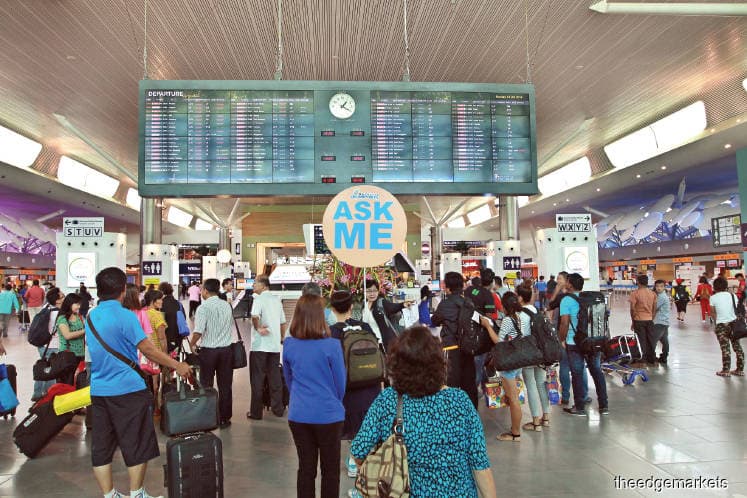
This article first appeared in The Edge Malaysia Weekly on August 26, 2019 - September 1, 2019
THE plan to break Malaysia Airports Holdings Bhd’s (MAHB) near monopoly and open up the airport sector to new players faces a delay as the government is still finalising details of the four new operating agreements (OAs) it entered into with the airport operator in April.
Two months have passed since the initial June deadline announced by Transport Minister Anthony Loke in April for his ministry and MAHB to finalise the OAs, which set the legal framework for the latter to run the 39 airports in the country.
“The new OAs have not been signed yet. The government and MAHB are still negotiating the terms,” the Ministry of Transport (MoT) tells The Edge via email.
Saying there is no delay, MoT attributes the slow-moving negotiations to both parties being “very careful” as they are responsible for protecting their respective interests.
The ministry now expects the OAs to be finalised by the end of the year.
An MAHB spokesman confirmed that the OAs had yet to be finalised, adding that management was unable to comment on the issues causing the delay in its talks with MoT.
“Until the new OAs have been signed off, private investors may want to hold off making formal commitments to invest in existing airports managed by MAHB,” a source familiar with the matter tells The Edge.
“Nevertheless, a delay is unlikely to affect MAHB’s financial performance as the airport operator can continue to operate under the present OA and be profitable.
“The only issue might be funding for airport expansion, which will be resolved with the implementation of the regulated asset base (RAB) framework by the Malaysian Aviation Commission (Mavcom),” the source says.
MAHB’s net profit growth has accelerated for four straight years since its financial year ended Dec 31, 2015 (FY2015). It saw its FY2018 net profit triple year on year to RM727.3 million, on the back of a 4.3% year-on-year increase in revenue to RM4.85 billion.
Mavcom, which is scheduled to announce new aeronautical charges based on the RAB framework by October, does not expect the setback in the new OA negotiations to derail the rollout of the new aeronautical charges nationwide come Jan 1.
“While the OAs provide input for the structuring of the RAB framework, the issue of structuring the OAs is separate from the issues of capital and operating expenses required for the airport network and the aeronautical charges for the airports,” a Mavcom spokesman tells The Edge.
Meanwhile, the deadline for feedback from the industry on proposals in Mavcom’s second consultation paper on the aeronautical charges framework closed on July 18.
“Following completion of the one-month consultation period, Mavcom is undertaking an in-depth analysis of the feedback gathered to determine the new aeronautical charges — including the passenger service charge (PSC), landing fee and aircraft parking fee — that will best serve consumers and the industry.
“Our consultation processes, including the most recent one, elicited 25 significant responses from airports, airlines, international industry associations, investors, financial institutions, rating agencies and other stakeholders on our development of the framework,” says the spokesman.
In the second consultation paper, which was released in June, Mavcom proposed three tariff structures: (i) according to the individual airport’s service levels and infrastructure; (ii) based on four clusters (geographical regions); and (iii) also based on four clusters, but the PSC for Asean is equalised with the international rates from the current RM35. The domestic PSC is also raised to RM14 from RM11 currently.
In April, the government announced four new OAs with MAHB — one each for the Kuala Lumpur International Airport (KLIA), designated airports in Peninsular Malaysia and airports in Sabah and Sarawak, which replaced two previous OAs signed in February 2009.
Loke was quoted as saying in April that the new OA framework would enable the private sector to collaborate with MAHB and invest in airport developments, thus reducing the government’s financial burden. The only other airport operator is MMC Corp Bhd, via its subsidiary Senai Airport Terminal Services Sdn Bhd, which manages the Senai International Airport in Johor and Kertih Airport in Terengganu.
The minister had also told The Edge in a May 13 interview that he had met with several European airport operators who were keen to invest in Malaysian airports.
Out of the 39 airports managed by MAHB, only seven are currently making a profit — KLIA, Penang, Langkawi, Kota Kinabalu, Kuching, Subang and Miri. The 18 short take-off and landing ports that connect rural areas are loss-making and are being cross-subsidised by MAHB’s profitable airports.
The new OA framework would also give the government and MAHB flexibility in provisioning airport development projects through several financing models, such as RAB, Airport Real Estate Investment Trust, Airport Development Fund or other mechanisms to be set by the government later.
As part of the negotiations on the new framework, MAHB is looking to carve out 40% of the 100 sq km land bank surrounding KLIA and be granted a 99-year lease for the land. MAHB group CEO Raja Azmi Raja Nazuddin had previously said that a longer lease period would benefit KLIA Aeropolis as commercial property investors want a longer lease to recover their capital expenditure.
In April, MAHB was granted an extension to run the 39 airports for another 35 years until Feb 11, 2069.
Save by subscribing to us for your print and/or digital copy.
P/S: The Edge is also available on Apple's AppStore and Androids' Google Play.